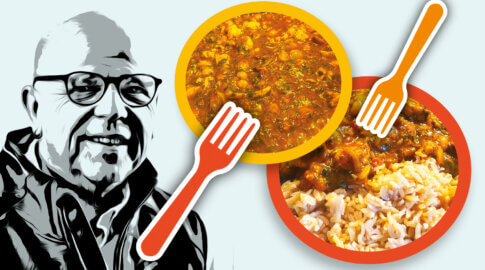The real cost of eating well with pulmonary hypertension
Why healthy eating guidelines don’t match reality
By Shaun Clayton, Certified Nutritionist and Operations and Finance Director at the PHA UK
Living with PH is challenging enough without the added pressure of trying to follow government healthy eating guidelines that are increasingly out of reach for many families. Recent findings from the “Broken Plate 2025” report by the Food Foundation have revealed a stark reality: the most deprived fifth of the UK population would need to allocate 45% of their disposable income to meet these guidelines, and for families with children, this figure rises to an alarming 70%.
This raises an important question—how practical are these guidelines for people living with PH, especially amidst a cost-of-living crisis? The report highlights a growing disparity: healthier foods, based on their nutrient profile, now cost more than double per calorie compared to ultra-processed alternatives. Moreover, these healthier options have seen their prices rise at twice the rate of less nutritious choices over the past two years.
As both a Certified Nutritionist and the Operations and Finance Director of PHA UK, I want to address this issue directly. I want to assure you that it is possible to make appropriate, affordable, and nutritious food choices without feeling guilty or like you’re falling short. Perfection isn’t the goal—progress is.
Health inequality on a plate
For individuals with PH, maintaining a heart-healthy diet is essential. Yet, the evidence presented in the “Broken Plate 2025” report underscores the urgent need to address health inequality in the UK. While some segments of society can afford to follow the idealised versions of a healthy diet—complete with organic avocados, sourdough toast, and pasture-raised eggs—many families must make do with far more modest options.
Take, for instance, beans on toast. This simple meal, costing less than two pounds, is often dismissed by those who promote more expensive dietary choices. However, it offers a nutrient-dense, affordable source of fibre and protein—a practical and valuable option for those on a tight budget. For someone managing PH, ensuring adequate fibre intake and avoiding excessive sodium is far more valuable than striving to match dietary ideals that are financially out of reach.
Advising families to replace such meals with costlier alternatives not only disregards the financial realities faced by many but also risks exacerbating feelings of failure and inadequacy. The focus should, instead, be on promoting realistic and accessible improvements that align with both nutritional needs and budgetary constraints.
Affordable nutrition for PH management
The truth is that eating well does not have to mean spending excessively. There are numerous nutritious and budget-friendly options available that can support health for those living with PH:
- Legumes: Beans and lentils are not only inexpensive but also rich in protein and fibre, helping to manage cholesterol and maintain energy levels.
- Frozen vegetables: Often more affordable than fresh produce, they retain most of their nutritional value and are easy to incorporate into meals.
- Whole grains: Foods like brown rice, oats, and wholegrain bread provide necessary fibre and energy, which are crucial for managing PH symptoms.
- Tinned Ffsh: Affordable options such as sardines and mackerel offer heart-healthy omega-3 fatty acids without breaking the bank.
Practical tips for eating well on a budget
Here are some practical strategies to help manage your diet without overspending:
- Plan your meals: Creating a meal plan not only helps manage your budget but also ensures you can include heart-healthy foods regularly.
- Cook in batches: Preparing meals in bulk saves both time and money and ensures you have nutritious options readily available.
- Limit processed foods: While convenient, processed foods often contain high levels of sodium and unhealthy fats that may exacerbate PH symptoms. Focusing on whole foods is both healthier and more economical in the long run.
- Utilise community resources: Food banks and community kitchens can provide access to nutritious foods at little to no cost. These resources exist to support you—there is no shame in using them.
Embracing small changes without guilt
It’s essential to recognise that even modest dietary adjustments can significantly benefit your health. Adding an extra portion of vegetables, choosing whole grains, or incorporating fibre-rich foods like beans and lentils can all contribute to better health outcomes.
Perfection isn’t the goal—progress is. Every small improvement is a step forward, and it’s important to focus on what’s achievable given your financial circumstances. Making practical, budget-friendly choices is not something to feel guilty about—it’s something to be proud of.
















